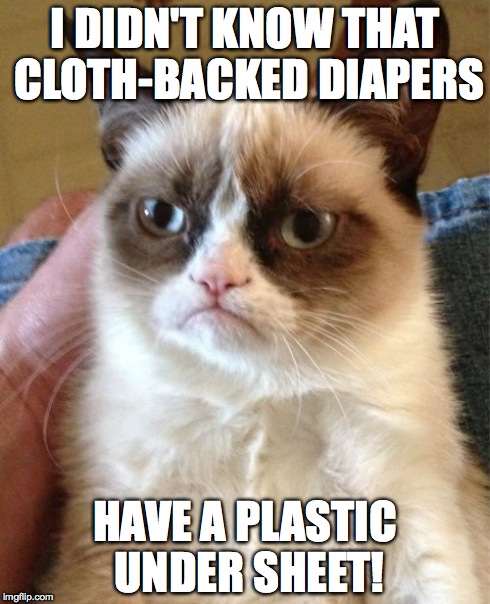I believe that all of us have engaged in this debate in one form or another. And we have good reasons for doing so, for it is going to affect our way of life. For better or worse, you might ask. Let us explore this topic a little then.
We have been hearing stories of just how many manufacturers have been switching from plastic-backed to cloth-backed products. Abena, Tena, Molicare, you name it. But why is this mass migration taking place? It all boils down somewhat to an obscure 2009 EU Ecolabel regulation on sanitary products. In a nutshell, it intends to regulate the environmental impact of all sanitary products, of which incontinence products, including diapers, are included. The only tangible benefit is that environmentally-conscious consumers will be drawn to products carrying this EU Ecolabel logo.
But the real driving force comes from the vast consumer base of the diaper manufacturers themselves. You see, any good business will do their research studiously. They will reach out to their customers and end-users, and the good businesses will take steps to address their needs and concerns. If not, they simply will lose their customers. It is important to note at this juncture that the bulk of the target group would be people like the elderly, terminally ill, and the incontinent. The other two groups – ABDLs and longshiftworkers – form a small proportion of these businesses.
Plastic-bcked diapers have been the norm for many years. We know them as the reliable one-piece backing garment that is very good with water-retention. You’d adjust the tapes at most once, and they retain their stickiness for a very long period. People are also very attached to plastic-backed as most ABDLs wore plastic-backed disposables themselves when they were kids. Yet, we all can’t ignore the two biggest drawbacks of plastic – their crinkles are very noisy, which reduces discreteness. They also have a notorious reputation for trapping heat, which can be very uncomfortable if you live in a tropical country like Singapore.
Cloth-backed diapers are new and emerging. First the baby diapers started the switch, but it took several years, and some EU policy *coughs unceremoniously* before adult diapers followed suit. Breathable? Not everyone agrees on this one, see below. Low-adhesive tapes? Everyone agrees on this, though Tena has some good tapes. But when it comes to discreetness, I think cloth wins hands down. Admittedly, the biggest drawback for me is that price wise, they have some catching up to do. (I can get 24 Tena Values for the price of 12 Tena Slips).
But I guess that the biggest misconception that the diapered-public has about cloth-backed diapers is this. They have a plastic-backing too. Only, it is directly under the padding area only and it is very thin.

Yes folks, the truth is out. This explains so much about cloth’s shortcomings! Liquid in over-soaked diapers simply escapes out of the sides. The sides are the portion that is breathable. So, in researching for this post, I’ve come to realise that when I buy a cloth-backed diaper, I am actually buying a plastic-backed diaper with a cloth cover. No wonder these are so pricey.
And that is the ‘dirty’ truth about cloth-backed. The fact is, the majority of tape-on diaper users want cloth-backed. And given that the big players European players i.e Abena and Tena are already switching to cloth, it is only a matter of time before the smaller players and their American counterparts bite the bullet.
Fortunately, there is a ray of hope. Two rays, to be exact. The first is the fact that these big companies haven’t completely shut down their plastic-backed lines. Remember, there are the incontinents who prefer plastic too. The older plastic Abena and the Tena Value (Tena Slip Original in Europe) are a testament to this. Then there are also the ABDL-centric diaper manufacturers. Bambino, Fabines, ABU(though it seems everyone is boycotting them). There are the newer manufacturers, such as AwwSoCute and Diaper Connoisseur. So, plastic will live on.
But I realise that many people are not giving cloth a second chance. They try a pack or two, and they conclude that it is not their type. I respect their conclusion. It is just that I feel many of these people aren’t giving enough time and effort into making it work for them. It is just like getting a new phone. If you’ve been on iPhones (3GS, 4S, 5S) for many years and you try out a Samsung Galaxy Note 4, you just can’t get the hang of it in a week. It would take several weeks before you get around its visible flaws and discover the hidden benefits.
For me, discreetness is top priority, and as I spend most of my time diapered asleep, wetness is not an issue. So cloth-backed is my preferred backing. Sadly, these are just too expensive, and I only get them as a special treat.
What I really wish is for the greater ABDL community to give cloth a greater chance, and more time before writing them off. The vast majority simply swear by plastic, and I wish that they would try out various cloth-backed brands before coming to their conclusion. I am sure that they have tried several plastic-backed brands before choosing their ‘favourite diaper’.
– Selv


